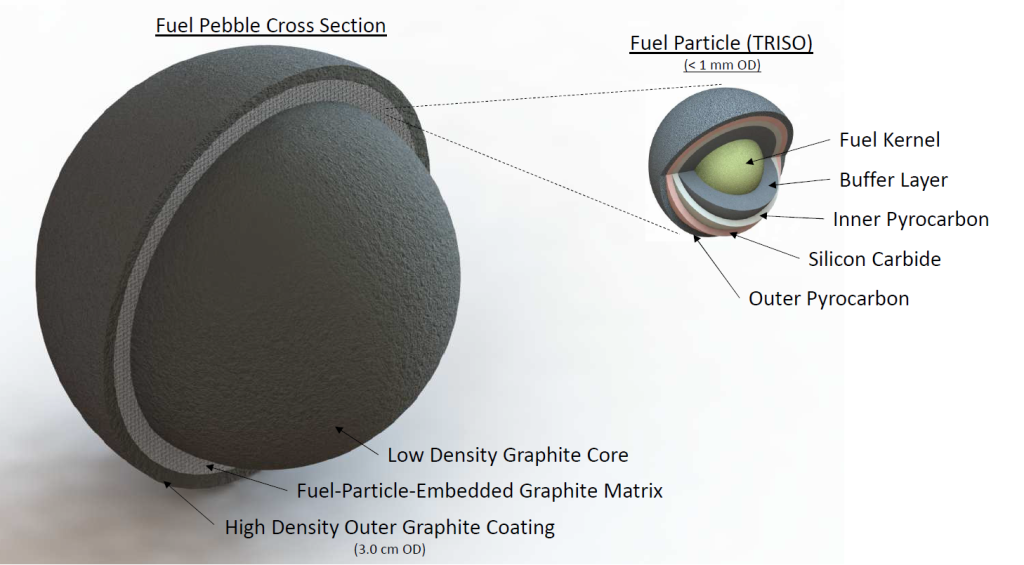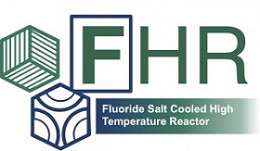The United States, though its investments in the Next Generation Nuclear Plant (NGNP) program, has developed the complete set of capabilities required to manufacture, irradiate, and examine and characterize high-temperature coated particle fuels. Testing at the Idaho National Laboratory (INL) of Advanced Gas Reactor (AGR) fuel compacts fabricated by Oak Ridge National Laboratory (ORNL) and irradiated over a 3-year period to 19.5% burn up in the Advanced Test Reactor (ATR) demonstrated that the new fuel manufacturing methods developed at ORNL provide impressively high quality fuel, that can retain fission products up to 1800°C [27].
PB-FHR Fuel
FHRs are differentiated from other reactor technologies because they use high temperature, coated particle fuels, cooled by the beryllium-based fluoride salt called “flibe” (7Li2BeF4). The use of a beryllium-based coolant involves a tradeoff between fuel utilization, neutronics, activation, salt cost, corrosion, and chemical safety. Flibe is the only fluoride salt that has sufficiently low parasitic neutron capture, and sufficiently high moderating capability, to allow the design of solid-fueled, salt-cooled reactor cores with negative void reactivity.1
Previous FHR pre-conceptual design studies have examined both fixed fuel designs and pebble fuels. The most recent UCB Mk1 pre conceptual design uses fuel pebbles that are 3.0 cm in diameter, half the diameter of pebbles used in conventional helium-cooled pebble bed reactors, which along with the more effective heat transfer provided by salt cooling, enables operation with significantly higher power density and smaller reactor sizes than helium cooled reactors.

Fuel Pebble and TRISO Particle diagram.
|
Fluoride Salts
Fluoride salt coolants have uniquely high volumetric heat capacity, low chemical reactivity with air and water, very low volatility at high temperature, effective natural circulation heat transfer, and high retention of most fission products. These characteristics, along with high solubility for uranium and thorium fluorides and reasonably low neutron capture probability, and good neutron moderation capability, explain the selection of fluoride salts as the primary coolant and fuel solvent for the original fluid-fueled Aircraft Nuclear Propulsion reactor in the 1950’s [8]. These attributes also make fluoride salts highly effective coolants for high-temperature reactors.

